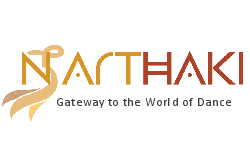
|
 |

|
 |
Enriching dance with depth and meaning - Ratna Bharati Acharya e-mail: ratnabharati@gmail.com March 4, 2025 Last year in August 2024, a 3-day seminar on Odissi dance was held in Bhubaneswar, Odisha. During the seminar, Sharmila Biswas (Odissi dancer and choreographer) discussed various career paths in the field of dance, including roles like choreographer, teacher, and others. Then, on February 5th, I attended an event where the "South Asian Dance Intersections" journals were launched. The event featured discussions on different facets of art, with several prominent figures presenting papers, engaging in discussions, and participating in Q&A sessions. These experiences resonate deeply with me, which is why I make every effort to attend such events. However, it's disheartening that in India, there's still very little focus on such discussions around the arts. What I'm about to write is inspired by personal experiences and observations of events around me, as well as my perspective on the broader landscape of classical dance. 1. Lack of guidance on diverse career paths in Dance: How often do teachers truly educate their students about the wide range of careers beyond being a performer in dance? We often focus solely on teaching items for programs or preparing for performances. But just as a science graduate can become a doctor, engineer, teacher, or scientist, the same diversity is possible in the field of dance. A student may not excel as a performer but may have a strong sense of choreography and stagecraft. Another may lack the stamina for stage performances but have the desire to teach dance and carry forward the tradition. Some may even pursue dance purely for health benefits, like meditation. Or, a student might be more interested in exploring the theory and history behind the dance and want to become a scholar. There are so many paths available for a student who comes to learn dance: choreographer, teacher, scholar, researcher, arts critic, and so on. But do all dance institutions and teachers acknowledge this? Do they guide their students toward these various art-related fields and show them the paths they can take? Sadly, I believe the answer is no. 2. Limited focus in Dance Education: Why do we, in dance schools, focus only on physical exercises and teaching dance items? Why don't we tell the stories associated with the dances? Why were certain pieces created by our gurus? What were their thoughts behind these creations? What is the story behind the dance pieces we perform that are rooted in Indian mythology? We can also share the stories of Dashavatara, Gautama Buddha, and Maa Durga. These stories are an integral part of dance. 3. Understanding the musical and emotional context of a dance Item: When teaching a dance item, it's equally important to understand the raga and tala it's based on. What is the emotional essence of the raga? Understanding this allows the dancer to connect deeply with the item and justify its performance. 4. The lack of support and criticism in the dance world: During the journal launch event (that I have cited above), it was mentioned that the journal would be available online due to the lack of funding for print and publication. When there is no funding for such meaningful work, where will the motivation come from to push these initiatives forward? A few months ago, I attended an online seminar organized by the Ministry of Culture, which was attended by various art critics. They were discussing about the present condition of art critics. People don't want to hear negative feedback, and once a critic has been paid for commuting or accommodations, how can they write something negative about someone? Perhaps this is also why there are fewer genuine art critics today. 5. The challenges of building a study circle for dance discussions: A while back, I tried forming a study circle where we could openly discuss dance-related topics, with participants engaging in unbiased conversations. Unfortunately, it didn't succeed, as no one contributed or showed interest. I believe it's time for us to reflect on these issues if we want to push classical dance forward and broaden its branches. Please think deeply about these concerns. Classical dance deserves more thoughtful engagement, and it is up to all of us to nurture and expand it.  Ratna Bharati Acharya is an Odissi practitioner with a deep interest in various classical, folk, and traditional art forms of India, always seeking to explore their roots and intricate details. She loves storytelling, especially sharing tales from Indian mythology and the Upanishads with children. She also enjoys narrating stories from the rich cultural heritage of Odisha to non-Indian Odissi dancers, helping them connect with the land through its art and history. Post your comments Pl provide your name and email id along with your comment. All appropriate comments posted with name & email id in the blog will also be featured in the site. |